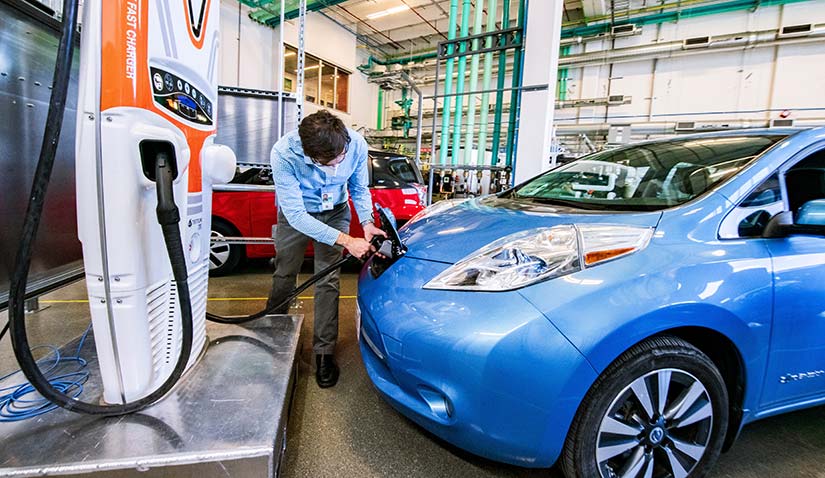Advanced Mobility
The Energy Systems Integration Facility (ESIF) fuses energy infrastructure with computational tools for high-fidelity analysis to address industry and stakeholders' most challenging questions about integrating advanced mobility technologies into the grid.

Advanced mobility research has evolved beyond traditional vehicles, components, and fueling infrastructure. Today it focuses on the development of new technologies for light-, medium-, and heavy-duty vehicles, with an inclusive systems-level focus on how to best integrate those technologies with other energy systems. As an increasingly complex sector, advanced mobility requires unique capabilities that cross research domains to explore how mobility technologies perform in real-world situations.
With these capabilities, NLR is developing the control strategies needed to optimize a new generation of transportation technologies within the context of the larger energy system.
The ESIF Advantage
Electric Vehicle Research Infrastructure
Electric vehicles and related infrastructure are being integrated with a new ecosystem of energy technologies and hybrid energy solutions. With NLR's nationally unique Electric Vehicle Research Infrastructure evaluation platform, industry and utility stakeholders can study and develop optimal strategies for coordinating EVs with other buildings, the grid, and other energy systems.
The capabilities of the Electric Vehicle Research Infrastructure evaluation platform include:
One-of-a-kind research platform with 20 MW of integrated grid and renewable assets, interconnected by cyber-physical links to study large-scale energy systems integration
High-performance computing—amplified by a virtual emulation environment powered by NLR's 44-petaflop supercomputer—with co-simulation of millions of devices and their interactions across energy domains
Real-time digital simulation—both grid-side and vehicle-side
Utility-scale infrastructure to characterize innovative technologies—including extreme fast charging, battery energy storage, and electrolyzers—and their integration with the grid, on-the-ground EV charging, and the electrical loads of nearby buildings
Flexible electric infrastructure featuring AC and DC charging with a variety of grid voltages—480 V, 208 V, 240/120 V
Diverse charging and energy storage equipment, including two 350-kW chargers (with two more expected soon), four level-2 chargers, a 50-kW charger, and a 40-kWh battery energy storage system
State-of-the-art distributed energy resource control and management applications to model EV charging and coordination dynamics, enabling the assessment of how varying loads and control systems affect the health of the broader energy system.
Learn more about NLR's transportation and electric vehicle grid integration research as well as its integrated modeling and analysis tools and aviation research.
Contacts
Alex Schroeder
Group Manager, Advanced Vehicles and Charging Infrastructure
Share
Last Updated Dec. 7, 2025
